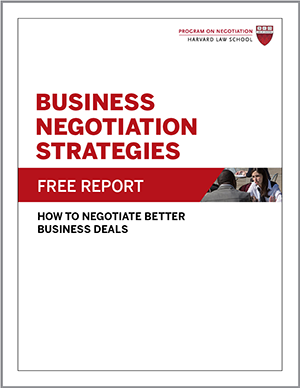
Coming together with negotiating counterparts at the bargaining table is a situation fraught with potential mishaps, all of which are compounded by the pressure to get the best deal a negotiator can for herself or her organization. How can negotiators build rapport while also negotiating for a share of the pie of assets? Here is some advice drawn from negotiations between popular website Facebook, and the makers of text-messaging service WhatsApp.
Building Relationships at the Bargaining Table
In February 2014, the news that Facebook would pay an astounding $19 billion to acquire text-messaging start-up WhatsApp caused jaws to drop across the tech world and beyond. Jan Koum, a Ukrainian immigrant, and his friend Brian Acton launched WhatsApp in 2009 with the goal of creating a text-messaging application that would connect users with family and friends abroad at a low cost. Since its inception, WhatsApp had been ad-free, and garnered 450 million global users who payed a 99-cent annual fee for this service.
In 2012, Facebook founder and CEO Mark Zuckerberg approached Koum about the possibility of acquiring his business. Concerned about Facebook’s pervasive use of ads and maintaining his company’s independence, Koum showed little interest. Nonetheless, a friendship developed between the two men over the course of hikes and dinners. “As we got to know each other, we got to respect each other more,” Koum told the Wall Street Journal.
Early in February 2014, WhatsApp received an official offer from Zuckerberg. Framing it as a partnership, Zuckerberg affirmed that Facebook would not try to force ads on WhatsApp or otherwise complicate the app, according to Koum.
Around this time, Google entered the race, going so far as to notify Sequoia Capital, WhatsApp’s venture-capital investor, that it was prepared to outbid Facebook no matter what the cost, according to the website The Information. But WhatsApp refused to engage with Google, reportedly viewing Facebook as a better match and suspecting that Google was interested primarily in thwarting its competitor.
Zuckerberg and Koum mapped out an arrangement in which WhatsApp would operate separately from the social-media behemoth. At Zuckerberg’s insistence, Koum also agreed to accept a seat on Facebook’s board of directors. The $19 billion deal was struck.
In an interview with the Wall Street Journal, Koum focused on his and Zuckerberg’s common goals rather than on their differences: “We have a shared mission of connecting the world and making it more open.”
Did Facebook Overpay for WhatsApp?
Pundits said the deal could pay off if the app met its goal of one billion users. And the acquisition would give Facebook the stronger presence it has been seeking on mobile devices. As of February 1, 2016, WhatsApp officially met its goal of one billion users.
Moreover, the prospect of losing to a competitor at the bargaining table can be a legitimate reason to overpay for a commodity, according to Harvard Business School and Harvard Law School professor Guhan Subramanian.
In so-called all-pay auctions, each bidder believes it will suffer in the marketplace if a competitor gets its target company. In the end, the winning bidder (here, Facebook) might overpay, but perhaps suffers less than the losing bidder (Google).
Viewed in this light, Facebook’s possible overpayment is rational rather a sign of competitive arousal – the type of “auction fever” that leads to bidders to try to win at any cost. Luckily, they met their user goal within two years.
Zuckerberg won Koum over by patiently pursuing his friendship and trust. Ultimately, Koum came to view their differences as compatible rather than insurmountable, and their close ties should serve them well when problems inevitably arise in their partnership and at the bargaining table.
What techniques do you use to build relationships at the bargaining table? Share your experiences with us in the comments.
Adapted from “Facebook’s Purchase of WhatsApp: Beyond the Eye-popping Acquisition,” first published in the May 2014 issue of the Negotiation Briefings newsletter.






No Responses to “How to Build a Relationship at the Bargaining Table During Business Negotiations”